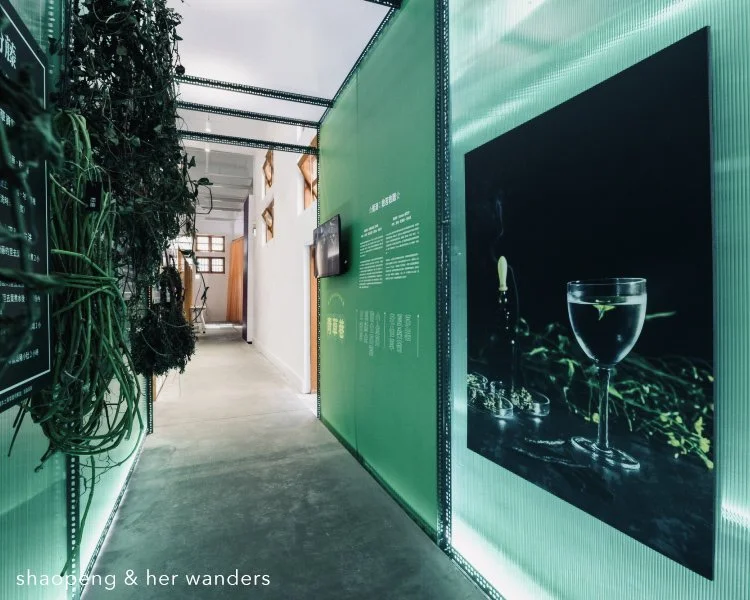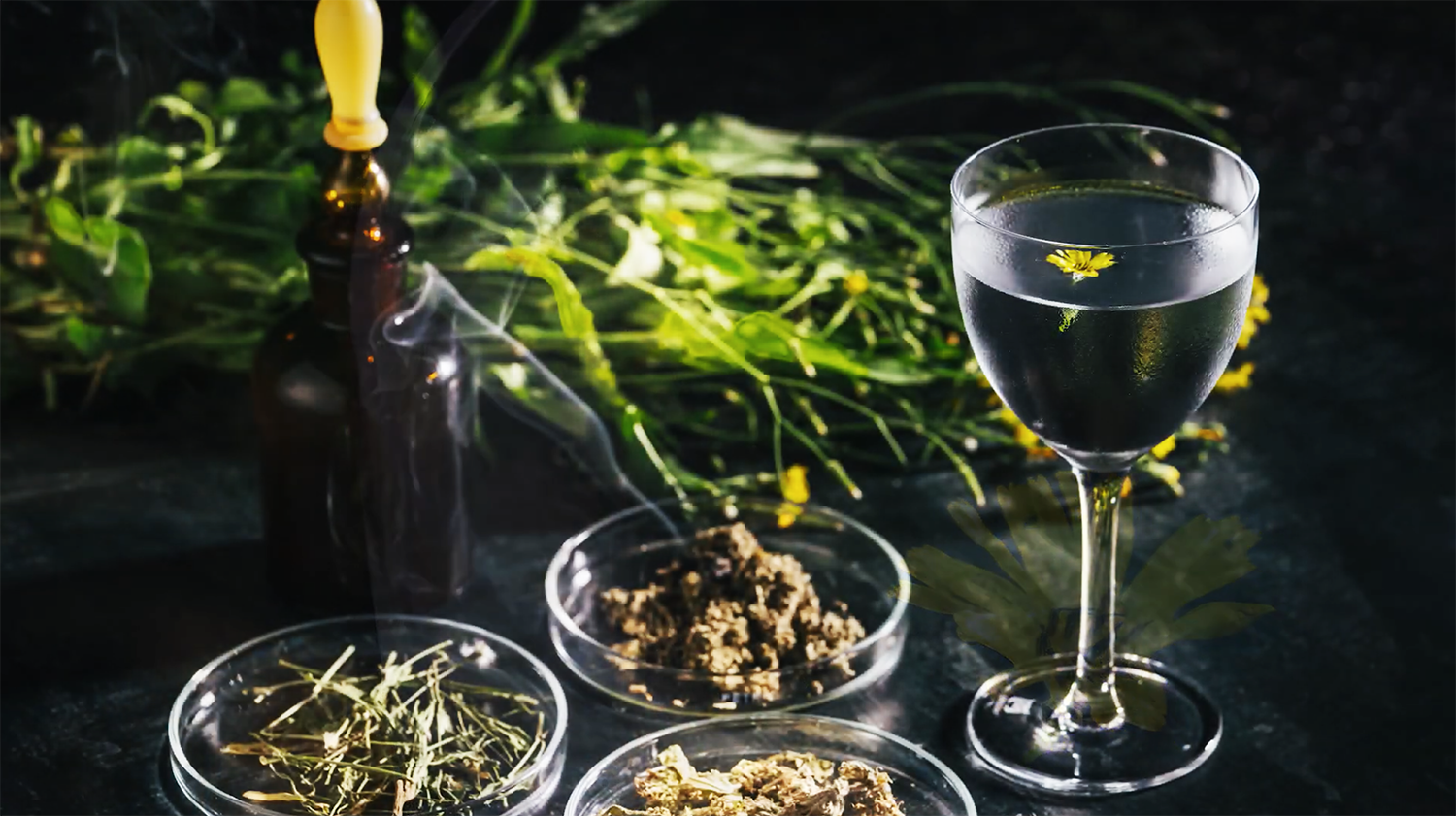Wandering in “WAN der LAND”
“Renamed after the architecture’s distinctive U-shape, U-mkt remains opened to the public since 2017, turning what was once a traditional wet market to an inspiring ‘cultural hub’.”
In last week’s story “Cloud Gate Dance Theatre’s ‘13 Tongues’ — A Sensational Cultural Experience”, this writer recounts the first-hand experience of watching culture-inspired choreography, coupled with the dancers’ mesmerising chant and their visual-striking costumes. By now, most of the readers would have developed an understanding of one of Taipei city’s oldest districts, Wanhua, where traces of the city’s long-lived traditions can still be found today.
This time, I would like to share with you readers about how Wanhua came to inspire culinary arts, the result of which is a wonderful exhibition that I was able to visit right before the COVID-19 outbreak.
Distinctive U-shaped architecture of the U-mkt
Before moving on to the exhibition itself, it would be interesting to take a look at its venue: U-mkt. Located only a few blocks away from the landmark Longshan Temple in Wanhua, today’s U-mkt used to be known as the Xinfu market. Established in 1935 and designated as the city’s historic site in 2006, Xinfu market formed an important part of the area’s social fabric. After years of restoration and renovation, U-mkt — renamed after the architecture’s distinctive U-shape — has remained open to the public since 2017, turning what was once a traditional wet market to an inspiring ‘cultural hub’.
Poster of the exhibition WAN der LAND at U-mkt
To most Taiwanese, Wanhua is often associated with gangster, temples, and even homeless people. But as one of the city’s oldest districts, Wanhua is a lot more than what is on the surface. The exhibition WAN der LAND opens up new ways, even for the locals, to explore the place’s rich traditions.
Rather than calling it an exhibition, it’s perhaps more apt to see WAN der LAND as a collective endeavour. Based on a careful selection of six themes representative of this area, chefs and bartenders alike were invited to create fine dining dishes dedicated to Wanhua. In other words, curators united multi-disciplinary professionals, such as chefs, bartenders, lighting designer and visual designer alike in this exhibition by using fine dining as a medium.
In WAN der LAND, six major themes — namely the temple, wet market, craftsmanship, Herb Lane, Dali Street and Hua Street — served as source of inspiration for a full course meal, including an appetiser, soup, entree, drink and two desserts. In this tale, I will recount three of the dishes that made me drool.
Appetiser x Temple
Section of “Temple” in the exhibition WAN der LAND
It goes without saying that Wanhua has a high temple density. Similar to church in the West, temples in Taiwan are more than just place of worship — it’s also where locals get to build a stronger bond with the community.
Inspired by Wanhua’s temples, chef FAN Po-Yen’s made an appetiser that is unique in every way. In a nutshell, he took pie crusts and filled with fresh diced scallop and sliced cherry radish, layering one on top of another to build a tower-like structure. This edible edifice was then topped with more slices of cherry radish covered in gold foil.
Chef Fan Bo-yan’s appetizer inspired by Wanhua’s temples
With an air of solemnity, it is clear that this tower-like edifice portrays the chef’s interpretation of a temple architecture whose rooftop seems to shorten that immeasurable distance between heaven and earth. According to FAN, the golden colour on the top is also a reference to those gold-foiled religious offering often found in temples.
Finally, he finished off the dish by sprinkling a handful of fresh chrysanthemum petals on the plate. Recalling the bouquets of fresh flowers often used as offering to the deities, each individual petal is — according to the chef — the representation of a worshipper, facing inwards as if performing his or her prayers to the divine.
Dessert x Craftsmanship
Section of “Craftsmanship” in the exhibition WAN der LAND
Having explored nearly every handmade shops in Wanhua, pastry chef LIAO Ying-Chi discovered that most of the workshops found in the area — whether it’s woodcarving, weaving, lantern-making or incense making — seems to have an association with the temples’ religious activities.
Not only was she surprised by the various types of craftsmanship found in Wanhua, LIAO was also captivated by the sincerity and the high level of concentration required during the making process of traditional handcrafts. In her eyes, the craftsmen’s devotion to their crafts is akin to the sincerity of a worshipper of god.
While walking around the neighbourhood, LIAO discovered a local shop that sells the disappearing “sweet potato jelly”. Though the ingredients used to make this traditional dessert are quite simply, the process isn’t. Drawing a similarity between the spirit that lies behind the making of this jelly dessert and that of a craftsman perfecting his craft, LIAO made up her mind to reinterpret this traditional dessert with her experience as a western pastry chef.
LIAO Ying-chi’s dessert inspired by the theme of craftsmanship
The result was a beautiful — or almost ethereal if I may say — edible landscape. The transparent wave-like base is made of sweet potato powder — the same ingredient used to make the sweet potato jelly. On top of this abstract sculptural base is placed with fudge-like cube made of roasted wheat flour. The dessert is meant to serve cold just like the traditional dessert from which LIAO drew her inspiration.
With this inventive dish, LIAO not only succeeded in merging old and new but also East and West. What’s more, this very dessert also embodies the life-time dedication of a craftsman in mastering his craft.
Cocktail x Herb Lane
Section of “Herb Lane” in the exhibition WAN der LAND
The Herb Lane in Wanhua is the largest of its kind in Taiwan. Found right next to the Longshan temple, this lane is home to a number of time-honoured shops that sell local herbs, including Taiwanese dandelion. It’s common for people from the older generation to get themselves a cup of medicinal herb tea whenever they pop by Wanhua; the writer’s father is one of them.
Inspired by the history and unique culture of the Herb Lane, taste designer WANG Wan-Xuan asked one of the shop owners to select ten types of herb that are the bitterest. By soaking these herbs in liquor, she was able to extract both the bitterness and the aroma from these herbs. Similar to a perfumer whose role is to experiment with different types of scent, WANG was experimenting with different types of herbs, in search of those with an aroma that stand out from the rest.
“Rescue” inspired by Wanhua’s Herb Lane
Based on the herbal bitters that WANG had brewed, bartender ZHENG Tse-Yu made one-of-a-kind martini by combining the bitters with pink gin and dry vermouth. This cocktail was named “Rescue”, which makes reference to the medicinal benefits of the herbs sold in Herb Lane. At the same time, “Rescue” is also meant to be served as a therapy to rescue those who suffer from work-related stress or in life.
Though small-scaled, the curators of this exhibition have succeeded in encapsulating the richness and diversity of Wanhua’s tradition and culture. In the writer’s opinion, WAN der LAND is perhaps the first exhibition of its kind. What’s missing here is only a chance for visitors to have a taste of these dishes!
If you would like to find out more about the making of the dishes mentioned above, you can watch the youtube videos by clicking on appetiser, dessert or cocktail.








